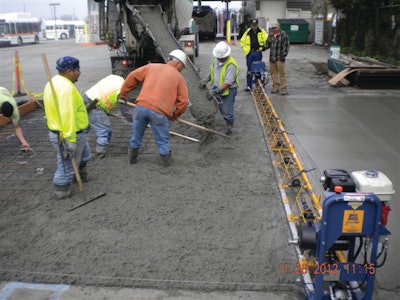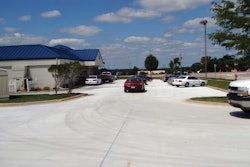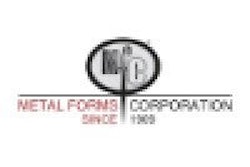
Sonoma County Transit is replacing deteriorating asphalt at its Santa Rosa, Calif., bus yard with reinforced concrete (“white”) pavement. The upgrade was made to accommodate new environmentally friendly (“green”) buses powered by compressed natural gas (CNG). The original facility was built in 1983 to refuel, wash and maintain its fleet of diesel vehicles, now being replaced with the CNG buses.
The job of removing the old asphalt and replacing it with concrete was awarded to Team Ghilotti, a grading, paving and underground utilities contractor located in Petaluma, Calif. Steve Mack, field coordinator for Team Ghilotti, was given the assignment to find a concrete finishing screed suitable for placing more than 1,200 cubic yards of 10-inch-thick “white” pavement. Although Mack had previous field experience with screeds, he was not familiar with current machines available in the marketplace.
As is a common purchasing procedure today, he began his hunt for a new machine by searching the Internet. His research revealed many competing manufacturers/brands, but Mack says his “mechanical mind” steered him to the Speed Screed from Metal Forms Corporation (MFC). He trusts his mechanical knowledge and instincts, based on 25 years experience as a heavy-equipment repair mechanic and service manager, coupled with 15 years of construction management. He says, “From a functional point of view, the design of the Speed Screed impressed me. The square finishing tube design (vs. angle blades) not only increases the life of the machine, but it also makes it easier to clean. I was also impressed with the functional winch design, since it is direct drive and requires no belts.”
The extensive Internet search led to the purchase of a Speed Screed Cruiser with extensions that allow variable paving widths and crown variations. Modular 2.5-, 5- and 10-foot screed sections were used to place slabs from 20 feet wide to 46 feet wide while also allowing adjustment for both parabolic crowns and inverted crowns (for drain inlets). The performance of the new screed impressed Team Ghilotti and also the Sonoma County inspectors, who reported that all test cylinder breaks exceeded psi requirements. Mack commented that “our carpenters, masons and laborers all approved and appreciated the screed for its ability to place concrete with less effort while producing a very professional finished product.”
Not only did the Speed Screed live up to his expectations on the job, but Mack also was impressed with the customer service provided by MFC: “We had some initial clutch problems, but Kathy Karth at the home office helped us resolve the issue in a very satisfactory manner. As it turns out, it was a mistake made in the field set-up, but, nevertheless, MFC shipped out a clutch overnight at no cost to Team Ghilotti.”
“Green” buses traveling on “white” pavements are now a reality in California due to the Internet, a good mechanical mind, exceptional screed performance, responsive customer service and good communications between Team Ghilotti and MFC.
About the Author
Tom Miller is president of Metal Forms Corporation.


















